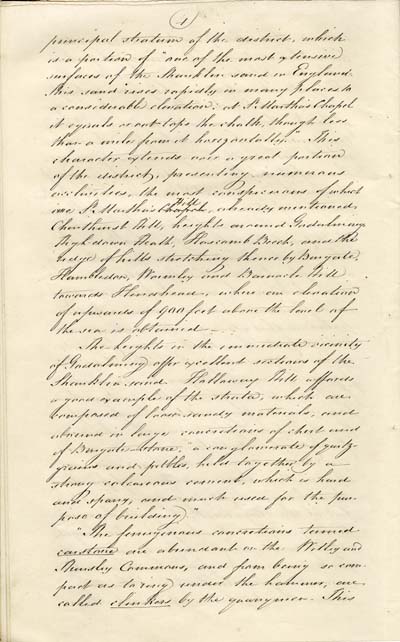principal stratum of the district, which
is a portion of “one of the most extensive
surfaces of the Shanklin sand in England.
This sand rises rapidly in many places to
a considerable elevation: at St. Martha’s Chapel
it equals or out-tops the chalk, though less
than a mile from it horizontally.” This
character extends over a great portion
of the district, presenting numerous
acclivities, the most conspicuous of which
are St. Martha’s Chapel, already mentioned,
Chinchurst Hill, heights around Godalming,
High-down Heath, Hascomb Beech, and the
ridge of hills stretching thence by Burgate,
Hambledon, Wormley and Barnacle Hill
towards Hindhead, where an elevation
of upwards 900 feet above the level of
the sea is obtained.
The heights in the immediate vicinity
of Godalming offer excellent sections of the
Shanklin sand. Holloway Hill affords
a good example of the strata, which are
composed of loose sandy materials, and
abound in large concentrations of chert and
of Burgate-stone, “a conglomerate of quartz-
grains and pebbles, held together by a
strong calcareous cement, which is hard
and sparry, and much used for the pur-
purpose of building.”
“The ferruginous concretions termed
curstone are abundant on the Witley and
Thursley Commons, and from being so com-
pact as to ring under the hammer, are
called clinkers by the quarrymen. This
|





